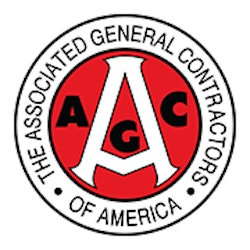
By a vote of 373-52 in the House and 74-19 in the Senate, the Moving Ahead for Progress in the 21stCentury Act (MAP-21) transportation reauthorization bill has been approved. Although the vote was overwhelmingly bipartisan, all 52 House members and 19 Senators who opposed the bill were Republican. The President is expected to sign the bill very soon. A one week extension of program authorization was approved to allow time for the legislation to be put in its proper format.
Provisions in MAP-21 that Impact Highway and Transportation Construction
Funding
- Provides funding certainty through FY 2014 (Sept. 30, 2014)
- The bill provides current funding levels plus inflation. Obligation limit for the Federal-aid highway program is $39.7 billion in FY 2013 and $40.25 billion in FY 2014. Federal transit programs are provided $10.6 billion in FY2013 and $10.7 billion in FY 2014.
Funding Distribution
- Eliminates equity bonus program and, instead, distributes highway formula funds to states based on each state’s share of total highway funds distributed in FY 2012. Every state is guaranteed a minimum return of 95 percent of its payments into the HTF.
Financing/Supplemental Revenue
- Increases funding for and expands the Transportation Infrastructure Finance & Innovation Act (TIFIA) program
- Increases available TIFIA resources from $122 million per year (total $244 million for two years) to $1.75 billion for this two year period – an amount more than 14 times larger than previous amounts.
- Enables TIFIA loans to be applied to related groups of projects, rather than a single project.
- Allows TIFIA to pay for a larger share of project costs (increased from 33 percent to 49 percent)
- Expands opportunities for rural projects
- Does not penalize states pursuing Public Private Partnerships (PPPs) involving leasing of road facilities to private companies.
- New capacity can be tolled on all existing Federal-aid (road, bridge) facilities (this eliminates the cap on slots in the Interstate Tolling and Value Pricing pilot programs). No existing untolled lanes can be tolled, and there have to be as many toll-free lanes as tolled lanes on the facility.
- Supports PPPs for public transportation projects, requiring FTA to provide technical assistance and best practice information to federal transit grant recipients on PPP models and methods to use private providers for public transit.
Consolidation of Federal Highway Programs
- Reduces the number of highway programs by two-thirds
- Four “core” programs are:
- National Highway Performance Program – to improve condition and performance of the National Highway System (NHS). Consolidation of NHS and IM, and aspects of the Bridge program.
- Surface Transportation Program – with broad eligibility for any public road suballocated to local governments based on population. Can also be used for bridges off of the Federal-aid system.
- Highway Safety Improvement Program – for road infrastructure safety, Includes a set-aside for rail grade crossings.
- Congestion Mitigation and Air Quality Program
Transportation Enhancements
Renames enhancements as transportation alternatives and lifts the requirement that a state must spend 10 percent of their Surface Transportation Program funding for these types of projects.
- Sets aside 2 percent of each state’s apportionments to be used on eligible transportation alternative projects
- Transportation alternative funding will be split, with 50 percent provided to local governments and 50 percent to states
- States cannot opt out of the transportation alternative set-aside entirely and use funds for transportation improvements
Freight
- Provides incentives for states to create freight plans
- If a project is on the state freight plan, the federal share would go from 80 percent to 90 percent for non-Interstate projects on the plan, and from 90 to 95 percent for projects on the Interstate system, in order to give states incentives to prioritize freight mobility projects.
- Does not create a separate category or program for freight with formula funding.
- Establishes a national freight policy and requires development of a national freight strategic plan and designation of a primary freight network.
- Authorizes a Projects of Regional and National Significance program (general funded, requires appropriations).
Performance Measures
Integrates performance measures for Metropolitan Planning Organizations and States that will be developed with the US Department of Transportation (DOT) to assess the condition of the facilities and operation of roads and bridges and establish performance targets.
Environmental Streamlining
- Contains significant reforms in the environmental review and planning process designed to reduce project delivery time and costs, including:
- Expands the number and types of projects that can be excluded from the federal environmental review process.
- Encourages early coordination between relevant agencies to avoid delays later in the review process and directs DOT to develop specific review deadlines.
- Designates U.S. DOT as the lead agency for the review and approval of transportation projects. DOT to encourage deadlines for actions by other federal agencies.
- Allows for programmatic decisions instead of project by project decisions.
- Limits federal National Environmental Policy Act review requirements for projects that are less than $5 million or where Federal funds are less than 15 percent of the project costing more than $30 million.
- Expands the category of projects that are automatically excluded from the federal environmental review process, including emergency projects, many maintenance projects and reconstruction projects.
- Provides expedited procedures for approval of projects with minimal environmental impact.
- Allows for the purchase of right-of-way and for design to begin prior to final environmental clearance.
Project Delivery
- Allows states to use the Construction Management General Contracting (CMGC). CMGC uses a two-step procurement process where the CM/GC is selected using price and best value.
- Creates incentives for states to use innovative contracting practices and use of new technologies.
Work Zone Safety
- Calls for the use of positive barriers where workers are exposed to high-volume, high-speed traffic and calls for unit price bidding in most cases.
Buy America
- Applies Buy America requirements to any project and project segments that are funded in part with Federal funds.
Clean Construction
- For states with PM 2.5 non-attainment areas, requires that 25 percent of state’s Construction Mitigation & Air Quality Improvement funds be used for projects in those areas that reduce PM. Projects can include diesel retrofit programs for on and off-road diesel powered equipment operating on a highway construction project in the non-attainment area.
Passenger Rail
- Does not include the Senate provision creating a new regulatory regime within the Surface Transportation Board that had the potential to stifle the growing passenger rail market.
Fly Ash
- The House provision amending the Solid Waste Disposal Act to classify fly ash as a nonhazardous waste was not included in the conference report.
Veterans Preference
- The conference report urges states to encourage contractors to make a best faith effort to hire veterans. Transit contractors will be encouraged to use a veterans hiring preference.
Harbor Maintenance Trust Fund
- The Harbor Maintenance Trust Fund (HMTF) provision in the House bill was not included in the conference report. Instead it provides a sense that the Administration fully utilized HMTF collection for intended activities.
- Includes a new requirement that the president include, as part of the annual budget, an assessment of the percentage of the eligible channels that would be maintained with the Army Corps’ budget request, as well as an assessment of the amount necessary to reach 95 percent availability of navigation channels over a 3-year period.



























